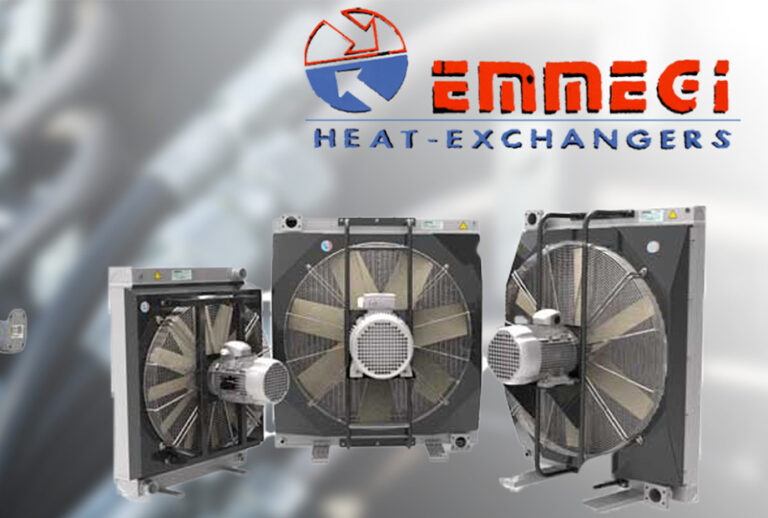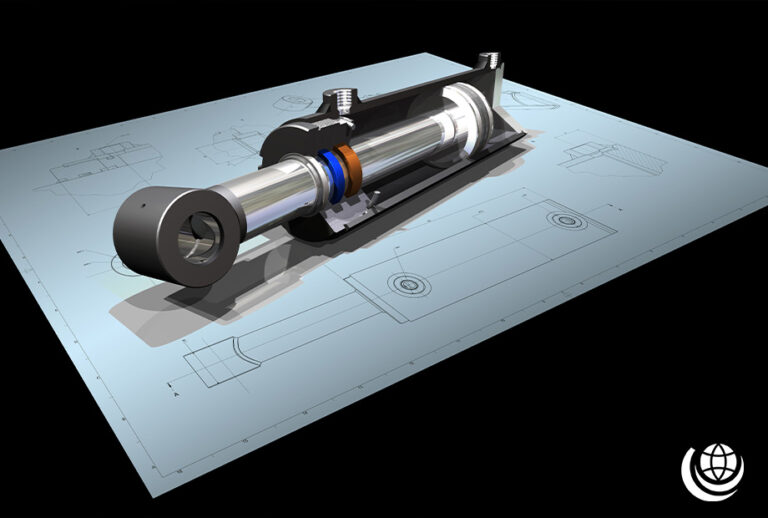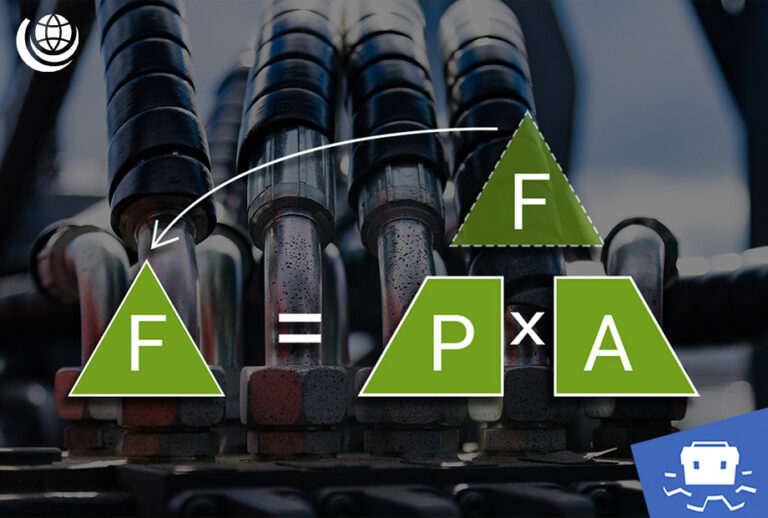Why is Managing Hydraulic Oil Temperature so Critical?
Overheating is one of the most common and damaging issues in hydraulic systems – and it almost always stems from elevated hydraulic oil temperature. When the oil gets too hot, it can compromise system performance, accelerate wear, and lead to costly failures.
A hydraulic oil temperature above 82°C (180°F) is a red flag. At this point, several problems can occur:
- Seal degradation – high temperatures break down seal compounds, leading to leaks and pressure loss;
- Oil oxidation and degradation – heat accelerates chemical breakdown, reducing fluid life and performance;
- Low viscosity – overheated oil becomes too thin to provide proper lubrication, increasing friction and wear.
However, temperature extremes in either direction can be harmful. If the oil’s viscosity index is too low, even temperatures below 82°C can result in poor flow characteristics and sluggish system response.
To maintain optimal performance, your hydraulic system must be able to dissipate heat faster than it accumulates. This requires a well-designed cooling system, proper fluid selection, and regular monitoring of temperature and viscosity.
How to Prevent Overheating in Hydraulic Systems
Preventing overheating is essential to maintaining system efficiency and extending the life of your hydraulic components. The two most effective strategies are to either reduce hydraulic oil temperature or increase heat dissipation – and ideally both.
One of the primary areas where heat is managed is the hydraulic reservoir. Here’s how to ensure it’s doing its job:
- Check fluid levels regularly – low oil levels reduce the system’s ability to absorb and dissipate heat. If the level is too low, top it up with the correct hydraulic fluid.
- Ensure proper airflow – the reservoir relies on airflow to cool the oil. Inspect for any obstructions, such as dirt, debris, or blocked vents, that could restrict ventilation.
- Keep the reservoir clean – a dirty or contaminated reservoir can trap heat and introduce particles that degrade oil quality.
By maintaining the reservoir and monitoring fluid levels, you help your system regulate hydraulic oil temperature more effectively – reducing the risk of overheating and unplanned downtime.
Heat Exchangers and Hydraulic Oil Temperature Control
Heat exchangers play a vital role in regulating hydraulic oil temperature by transferring excess heat from the fluid to a cooling medium – typically air or water. If your system is overheating, the heat exchanger is one of the first components to inspect.
To ensure optimal performance, follow these key steps:
- Check for blockages – a clogged heat exchanger core can severely restrict heat transfer. Inspect and clean the core regularly to maintain efficiency.
- Monitor coolant flow and temperature – the effectiveness of the heat exchanger depends on both the hydraulic oil and coolant flow rates. Any disruption in the cooling circuit – such as pump failure or clogged lines – should be addressed immediately.
- Use an infrared thermometer – this tool allows you to measure surface temperatures and verify that the heat exchanger is effectively reducing oil temperature across its inlet and outlet.
Maintaining a clean, functional heat exchanger is one of the most effective ways to prevent overheating and protect your hydraulic system from thermal stress. If the heat exchanger is underperforming, or damaged, it may need to be repaired or replaced to restore proper thermal regulation.
Leakage and its Impact on Hydraulic Oil Temperature
Leakage within a hydraulic system doesn’t just reduce efficiency – it also contributes significantly to rising hydraulic oil temperature. When pressure drops due to internal or external leaks, the system compensates by working harder, which generates excess heat.
Here’s how leakage leads to overheating:
- Pressure loss = heat gain – a drop in system pressure forces components to operate inefficiently, converting energy into heat rather than useful work.
- Internal leakage – common culprits include worn cylinders, improperly adjusted valves, or damaged seals. These components allow fluid to bypass, increasing flow and friction.
- Relief valve misconfiguration – in closed-centre circuits, if the relief valve is set below or too close to the pressure-compensator setting, oil continuously circulates through the relief valve. This constant bypassing generates significant heat and prevents the system from reaching its intended pressure.
To prevent heat buildup caused by leakage:
- Regularly inspect components for signs of internal or external leaks;
- Ensure valves are correctly adjusted and pressure settings are properly configured;
- Monitor relief valve behavior in closed-centre systems to avoid unnecessary bypass flow.
By identifying and correcting leaks promptly, you can reduce unnecessary heat generation and maintain a stable hydraulic oil temperature – protecting both performance and component longevity.
We are the first choice for customers in over 130 countries worldwide, supplying a vast selection of hydraulic brands and components. You are guaranteed impartial, technical advice and optimal solutions. How can we help?
Discover more Free Educational Content from our Fluid Power Technical Knowledge Hub…
How to size a Hydraulic Cooler…
Overheating is the second most common issue in hydraulic equipment – trailing only behind leaks. While hydraulics excel at power transmission, they’re notoriously inefficient when it comes to heat.
This article breaks down how to size the right cooler to maintain system stability, reduce downtime, and protect performance.
Learn MoreThe Vital Role of Hydraulic Cylinder Seals
Hydraulic cylinder seals do more than prevent leaks – they safeguard system integrity and control motion. Found anywhere components meet liquid environments, these small but essential parts convert fluid power into precise linear force.
This article explores their role in maintaining pressure, reducing wear, and keeping hydraulic systems operating at peak performance.
Learn MoreAn Introduction to Hydraulic Pressure and Flow
At the heart of every hydraulic system lies fluid dynamics—the science of moving liquids under pressure. Whether you’re building or maintaining hydraulic equipment, understanding how pressure and flow interact is key to achieving performance, control, and reliability.
This article unpacks the essential principles behind fluid power and how they shape modern hydraulic design.
Learn More






